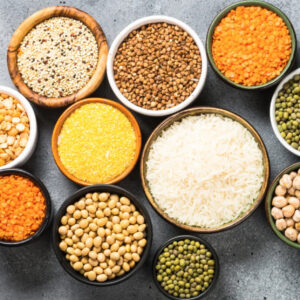
Canada is the last country in the world we think of when we hear words like “poverty” and “hunger-stricken”.
This can be proven by the fact that each year hundreds upon hundreds of Canadian dollars are donated to help starving populations in third world countries. A fact that has become common knowledge to most, but less common is the knowledge that there are Northern fly-in communities in Canada with families that can’t even afford a case of water.
And the reason is more startling than you think.
Food in the North has always been expensive, but living in the North doesn’t guarantee higher wages. Although subsidized by 15 per cent, the cost of shipping food to the North is still exorbitant and puts nutritional items beyond the reach of many families. This can be easily seen in the fact that almost half of Inuit adults earn less than $20,000 annually, while the price of groceries for a family of four is an estimated $19,760 annually.
To put it into perspective: a head of cabbage rings in at $38 and a case of water rings in at $105 in Iqaluit. So, shopping for groceries week-to-week could easily cost a whopping $600, and you might not hit all four food groups. To top it off, not everyone benefits from the subsidy of the food because it is based upon year-round road access and if the old “Food Mail” program from the 1960s was used by the specific community. In other words, the subsidy is based on past usage and not current need put forth by northern communities.
This is why the Inuit go hungry more than any other indigenous nation.
Many parents skip meals or choose not to eat at all so that their children can eat. With young mouths to feed, some unreliable food sources have revealed themselves:
In 2001, the Niqinik Nuatsivik Food Bank opened its doors to serve about 30 families. But in 2014, it served as many as 120 families and those same families would come looking for supplies and food every two weeks.
Some families have taken it upon themselves to hunt for meat in day-long expeditions to find caribou or seal, but only if they haven’t been pushed to sell the equipment needed to do so.
While the most desperate — much like poverty stricken families in third world countries — will resort to foraging in dumps to find scraps of food.

This isn’t happening in a far-away place either, this is a $2,000 plane ticket away in Nunavut, Canada. The cost of travel to and from Nunavut also answers the question as to why these families don’t move — if families can’t afford the cost of expensive food, how can they afford the expensive cost to leave?
But there have been some speculations and ideas brought forward; including proper and effective subsidization of food and hunting supplies. It has also been suggested that online opportunities need to be focused on to help create an economy for the northern communities. But, Nunavut has expensive, slow and limited internet access — more so than any other part of the country. So, this likely won’t be an option until efforts are made to enable high-speed internet access in the North.
So, many indigenous nations have stories of famine and drought that have been passed through oral tradition and history from years ago. The problem here is that northern communities are living it now.
If more national efforts were focused on helping the hungry in Canada rather than the hungry in another country, pages wouldn’t exist to post about the high cost of food in northern communities. And Southern communities wouldn’t have to be appalled at learning that their northern neighbours watch their children go hungry while a bottle of ketchup costs $9
Leesee Papatsi’s page “Feeding My Family” on Facebook is a good starting point to learn more about the issue.











